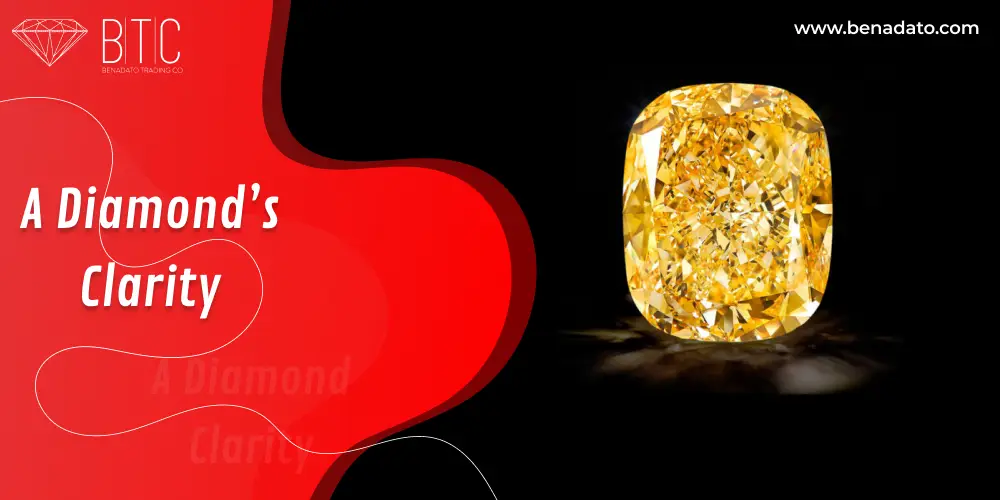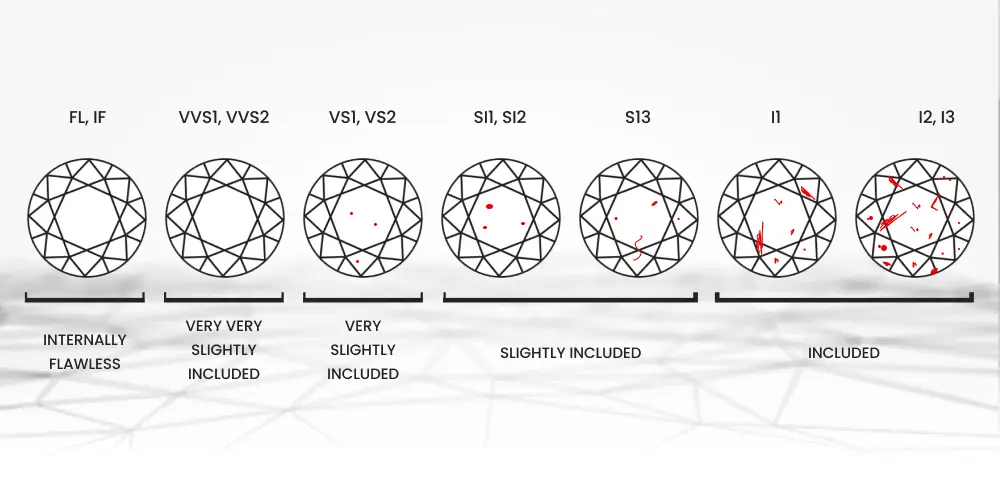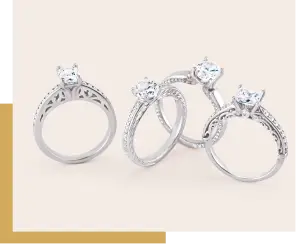
Clarity is one of the most important C’s out of 4C’s, as out of 4C’s clarity and the color is the first thing someone notices
Diamond clarity is a qualitative metric that grades the visual appearance of each diamond. The fewer inclusions and blemishes the diamond has, the better the clarity grade. Because diamonds formed deep within the earth, under extreme heat and pressure, they often contain unique birthmarks, either internal (inclusions) or external (blemishes). Clarity describes the presence or absence of inclusions and blemishes within the diamond on its surface. These slight birthmark type indications make every diamond unique. However, they can also affect the beauty and value of the diamond.
These natural birthmarks are often referred to as inclusions. The fewer inclusions a diamond has, the rarer and more valuable it is. Diamonds that contain several inclusions are less brilliant because inclusions can interfere with light passing through the diamond.
Nearly all diamonds have some inclusions as evidence of the natural evolution of the original diamond crystal. Inclusions are like the fingerprint of a stone, but they’re different in every diamond and are also known as indicators of a stone’s origin.
The GIA Diamond Clarity Scale has 6 categories, some of which are divided, for a total of 11 specific grades, they are: Flawless (FL), Internally Flawless (IF), Very Very Slightly Included (VVS1 and VVS2), Very Slightly Included (VS1 and VS2), Slightly Included (SI1 and SI2), Included (I1, I2, and I3)
Though flawless diamonds are the rarest, a diamond does not have to be perfect to look amazing. Diamonds with VVS and VS clarity grades are excellent choices for both value and appearance. Even diamonds with an SI rating don’t necessarily have visible inclusions and can be a more affordable option. The clarity grade is verified in a grading lab certificate that accompanies your diamond.
Diamond clarity grading is done with specially-designed microscopes, using ten-power magnification. Each diamond is evaluated by multiple gemologists and given one of the following clarity grades:

One of the most significant determinants for the pricing of a diamond is its clarity. The same diamond possessing an S12 clarity grade will have a lesser price than a diamond holding VVS1 grade on a clarity scale.
Take, for an example, if a diamond is of one carat of weight with a color grade of G and a clarity grade of S12 on the diamond, compared to a diamond of the same size and shape with all other grade scales being the same except the clarity grade was a VVS1. The second diamond sold for almost $10,000 retail, while the first diamond sold for less than half the price because of the quality of clarity rating.
Here, at Benadato, we thoroughly examine the clarity of a diamond with other 3C’s for the valuation of a diamond, but we provide the best possible returns for your diamond.
Get in touch with us to sell any of your diamond pieces for the best value.
